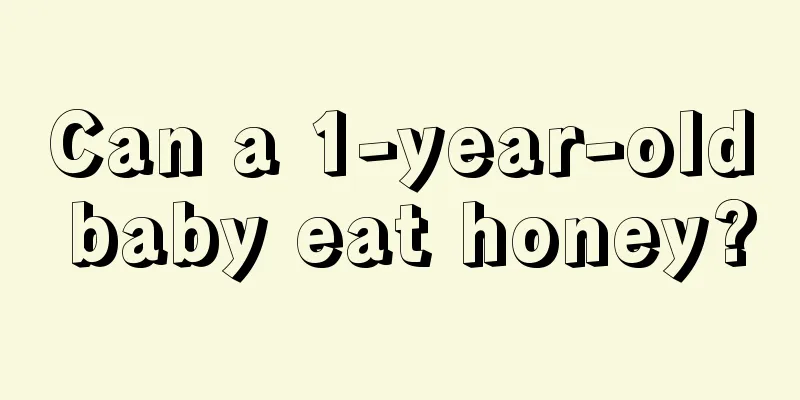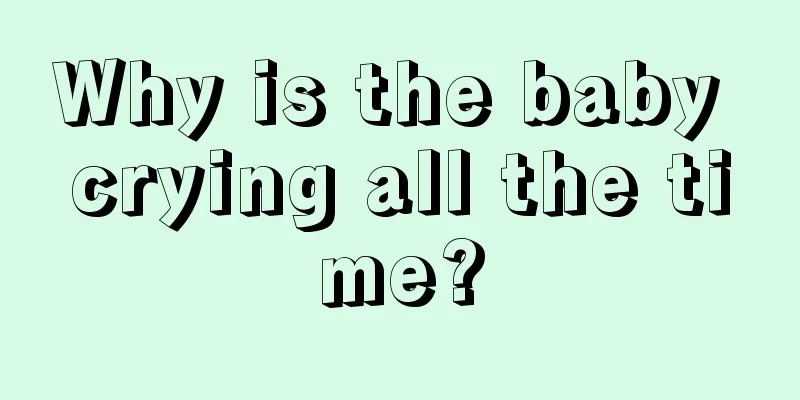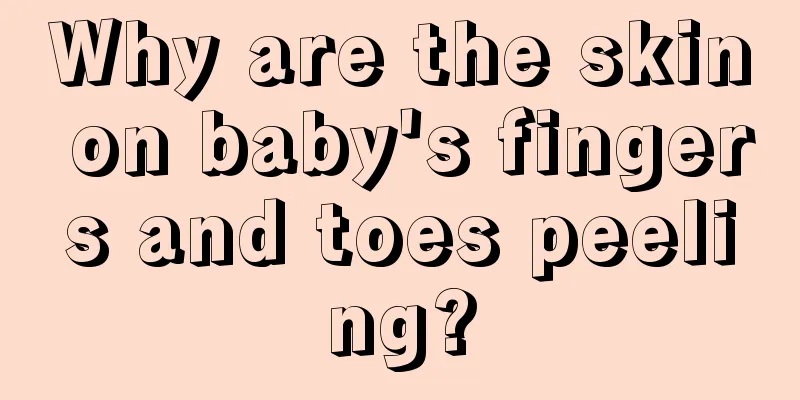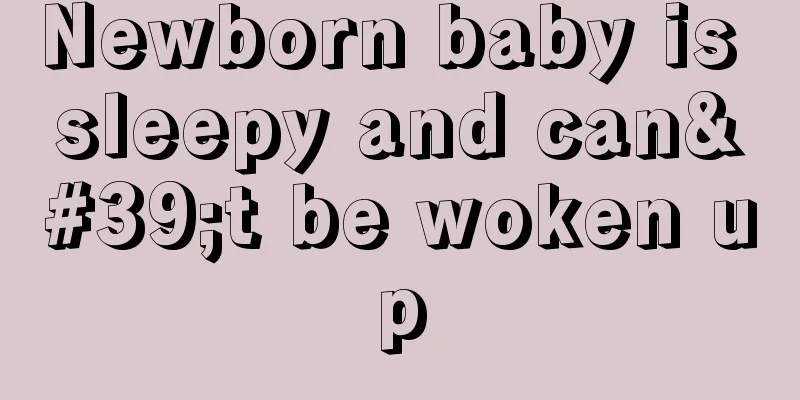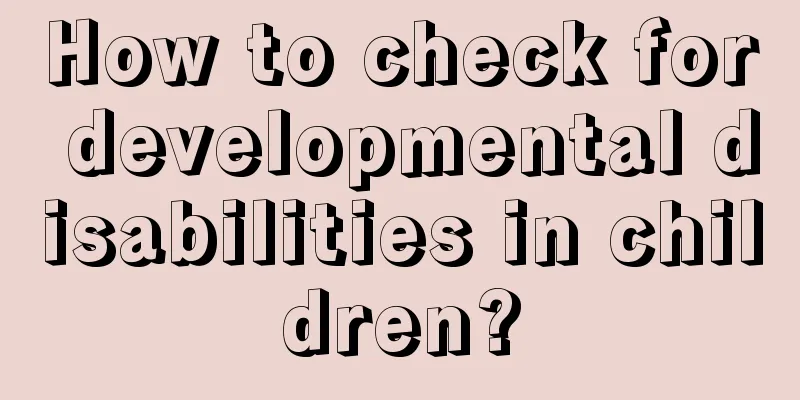Does your baby have a dent on his head?

|
A sunken baby's head is a very common disease in life. Most newborns with sunken skulls can recover on their own if there are no obvious symptoms of injury, but not all of them can. It may also be a precursor to epilepsy. Severe cases may affect the baby's brain development. However, these are related to the severity of the disease. So what is the matter with the sunken baby's head?
1. What is the cause of the depression on the baby's head? After a baby is born, there is a concave part on the top of the head, called the fontanelle. The fontanelle is caused by the fact that the bones have not yet developed well and the bone sutures have not yet completely closed when the baby is born. When the body loses more water, the cerebrospinal fluid in the ventricles will also decrease, the pressure will decrease, and the fontanelle will become noticeably sunken. If an infant develops this symptom after vomiting or diarrhea, it means that the body is already moderately dehydrated and needs to be replenished with water in time. Extremely thin babies who are severely malnourished due to improper feeding may also have a sunken fontanelle. At this time, they need to strengthen their nutrition and feed them properly. A very small number of babies have small heads due to poor brain development due to maternal infection during embryogenesis or other diseases. The head circumference is small at birth, and the fontanelle closes prematurely 5-6 months after birth, resulting in microcephaly; the head is small and pointed, the forehead is narrow, the nose bridge is sunken, the lower jaw is small and retracted, and there is also intellectual disability. In children with cretinism caused by hypothyroidism, the fontanelle will also take time to close. 2. When will the depression on the baby's head close? Under normal circumstances, the posterior fontanelle is very small or closed when the baby is born, only large enough to accommodate a fingertip, and closes at the latest 6 to 8 weeks after birth. The oblique diameter of the anterior fontanelle is approximately 1.5 to 2.5 cm at birth. After birth, as the head develops, the head circumference gradually increases and the anterior fontanelle also increases. Six months after birth, the skull gradually becomes smaller as it ossifies and usually closes between one and a half years old. A very small number of babies have poor brain development and a small head due to maternal infection during embryogenesis or other diseases. Their head circumference is small at birth and the anterior fontanelle closes prematurely 5 to 6 months after birth, causing microcephaly. Babies grow very rapidly during infancy, and their bone development requires vitamin D and calcium. If they are not supplemented in time, they are prone to rickets. If the anterior fontanelle of a baby with this disease still does not close 18 months after birth, he or she should go to the hospital for further examination.
The normal anterior fontanelle is flat. If it suddenly bulges or gradually becomes bulging and full, it may be a signal of disease. Intracranial infection It is common in various diseases such as meningitis and encephalitis, caused by increased intracranial pressure. The fontanelle is bulging, especially when the child is crying, and it feels tight to the touch. If the child is accompanied by symptoms such as fever, vomiting, stiff neck, and convulsions, parents should take the child to the hospital for emergency treatment as soon as possible. Hydrocephalus The most common is obstructive hydrocephalus, in which the child's head is enlarged, the head circumference is larger than that of normal children, the anterior fontanelle is difficult to close, the child's development is poor, and he has mental retardation. Microcephaly is mostly caused by premature closure of the craniosynostosis, especially premature closure of the sagittal suture, which can make the baby's head longer and narrower. How to protect the baby's head fontanelle 1. When washing your baby's hair, do not scratch it hard. You can gently rub it with your fingertips. 2. If there is dandruff or other dirt on the fontanelle that is difficult to wash off, you can gently rub it with vegetable oil or baby oil, and then wash it with baby shampoo after a few minutes. 3. Avoid sharp or hard objects from injuring the fontanelle. 4. When taking your baby out, it is best to let him wear a small hat to protect his head. 5. If the fontanelle is accidentally hit, parents should carefully observe the baby's reaction and go to the hospital for examination immediately if there are any abnormal symptoms.
1. The size and structure of a newborn's head are very different from those of an adult. During the neonatal period, parents should pay special attention to the protection and development of the newborn's head. The most important part of the head is the fontanelle, which should be paid more attention to. 2. The baby's fontanelle is very important. Parents or relatives should not touch or press the newborn's head at will, especially the fontanelle, otherwise it may cause damage to the baby's brain. 3. Babies generally do not need to use pillows because the head of a newborn is almost as wide as the shoulders, and the back and the back of the head are on the same plane. Using a pillow will affect the baby's bone development. 4. It is a relatively safe and ideal sleeping position for newborns to sleep on their side, with the baby frequently alternating between the two sides. It also helps the baby's head shape to be beautiful when sleeping. Therefore, do not let your baby sleep in a fixed position. Turn him over frequently to change his sleeping position. If your baby always sleeps on one side, his skull will be deformed and his face will become asymmetrical. 5. The head of a newborn is the part that needs the most protection. When taking your baby out, be sure to wear a hat. On the one hand, it can protect the baby from the wind, and on the other hand, it can block the sunlight to avoid sunburn of the scalp. 6. The baby's scalp is very delicate. Shaving the baby's hair can easily damage the hair follicles on the scalp and cause infection and inflammation. Especially now that the weather is getting hot and the sun is very strong, the hair can also serve as a fontanelle and sunscreen. 7. Walking and rocking your baby while he/she is asleep. Although this method can help your baby fall asleep quickly, the baby's head is very fragile. Rocking can hurt the baby's neck and brain development, posing a hidden danger to the baby's health. |
<<: 1 and a half year old baby can't speak
>>: What is the lack of children's poor sleep
Recommend
Why do children grind their teeth when they sleep at night?
I wonder if mothers have noticed that babies have...
What to eat for children with eye problems
Nowadays, in many schools in our country, many st...
What to do if a child has a dry and bleeding nose
In life, children are the apple of their parents’...
Can children drink Xiao Chaihu when they have a fever?
Xiao Chaihu is a relatively common Chinese patent...
How to treat yellow urine in babies
If the baby's urine is yellow, parents must p...
What are the symptoms of anorexia in children?
Anorexia in children is also clinically known as ...
What should I do if my child has new teeth growing behind his front teeth?
Many children are in the stage of growing teeth w...
What to do if your child's lip tie breaks
Generally speaking, if a child's lip frenulum...
What is the cause of testicular dysplasia in children?
The testicle is the most important organ in the m...
Why does my child have a fever and his face is swollen?
Nowadays, many children often suffer from fever a...
What are the complete recipes for children’s spleen and stomach strengthening soups?
Compared with adults, children's spleen and s...
Should I squeeze the nipples of a newborn baby?
For a newborn baby, any family member will take v...
What is the most effective food for children with phlegm?
It is a common phenomenon for children to have ph...
Be careful of these symptoms of encephalitis in children
Many parents will find that their children have a...
What can children eat to grow taller?
I believe that when we were young, every time we ...





